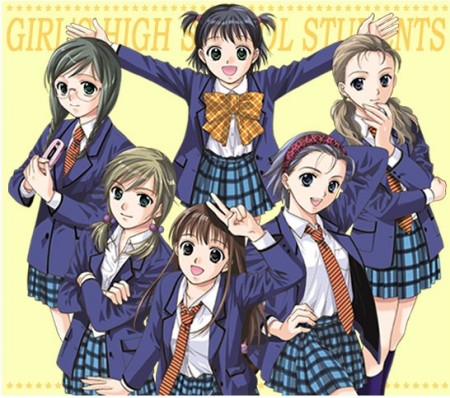Ask John: What’s the Significance of Gender-Exclusive Schools in Anime?

Question:
What’s the significance of all-girl high schools? I’ve recently seen a slew of all-girl schools in anime like K-On!, Girls Und Panzer and the recently premiered Yuyushiki. It looks interesting.
Answer:
I’m not actually certain that all-girls school settings have a significant meaning in anime apart from being a reminder of the sort of subtle cultural differences that distinguish anime from American pop-culture entertainment. Unlike America, which now has few if any gender-exclusive schools, all-boys and all-girls school are relatively commonplace in Japan. And these institutions have been prominent settings for anime for decades. Anime including the 1984 Cream Lemon: Escalation series, and 90’s and later productions including Oniisama E…, Maria-sama ga Miteru, Strawberry Panic, and Gakuen Utopia Manabi Straight, in addition to productions like the current Yuyushiki, have been set in and around all-girls schools. Anime series including Gakuen Heaven, Princess Princess, Suki na Mono wa Suki Dakara Shoganai, and Danchi Kokosei no Nichijo are set in boys-only schools. Anime including Sukeban Boy, Ai Mai Mii Strawberry Eggs, Mariaholic, and Otome wa Boku ni Koishiteru use the setting to create fish-out-of-water situational comedies by putting a disguised boy in an all-girls school. The Seitokai Yakuindomo and Asa Made Jugyou Chu anime play with the trope by setting their stories in schools that have just switched from all-girls to co-ed, making male students a tiny minority of the student body.
In the case of anime series like the “Escalation” series and Oniisama E…, and Gakuen Heaven and Sukisho, the gender-exclusive setting allows anime to concentrate on the dramatic and sexual conflicts and relationships that emerge within gender-exclusive communities. The “Escalation” series, Strawberry Panic, Sono Hanabira ni Kuchizuke o, and Aoi Hana focus on lesbian relationships that develop at all-girls schools. Oniisama E… and Joshikousei deal with the cattiness, rivalry, and adolescent insecurity naturally evoked and propogated by an all-female environment. Gakuen Heaven and Sukisho depict homosexuality emerging due, in part, to exclusive male closeness. Princess Princess depicts boys at a gender-exclusive school devising a novel way to introduce a female presence into their school. In very recent years, the gender-exclusive school setting has been used primarily as a convenient narrative shortcut. Shows including K-On, Yuyushiki, and Danchi Kokosei no Nichijo can focus entirely on cute girls or quirky boys because the story setting eliminates the necessity of representing the opposite gender. In effect, exploiting the gender-exclusive school setting allows for greater fan service.
Add a Comment
You must be logged in to post a comment.


Hello from Japan. I was amazed at the quality of your columns and decided to follow.
Please allow me to point out : title of anime “Danchi Kokosei…” should be corrected as “Danshi Kokosei…” (Everyday Life of Male High schooler).
Concerning all-girls high school, I remember that “Supergirl” (1984 movie) enrolled for such school. I personally regard the movie as a “moé film preceded Japanese Anime” indeed.